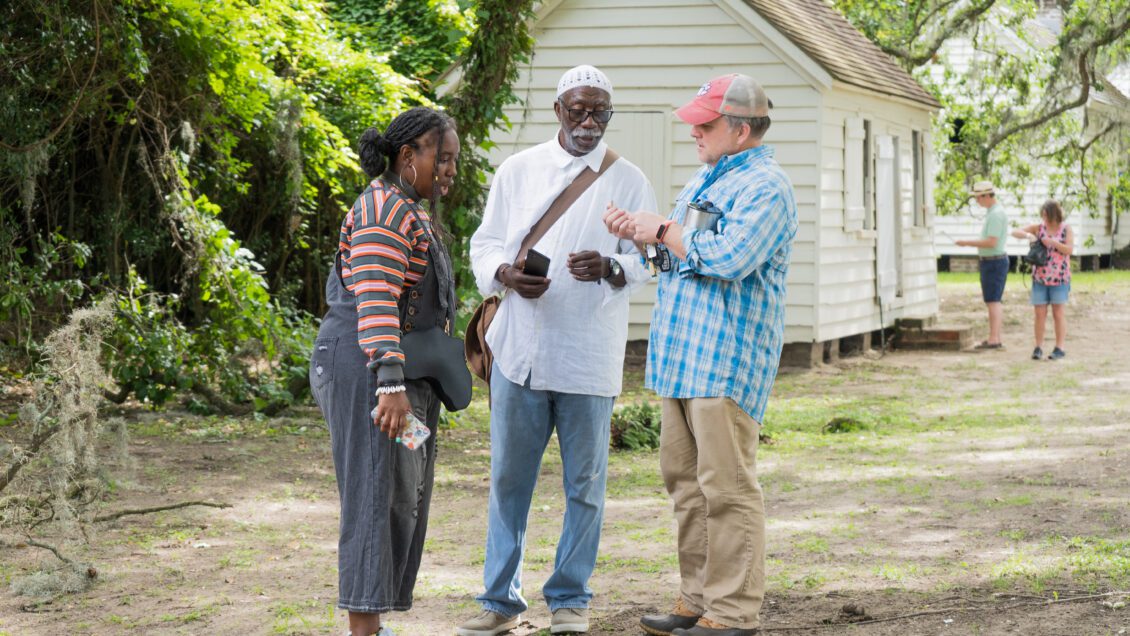Clemson’s Historic Preservation program is engaging the Lowcountry with its Johns Island Preservation Field School. From learning about the lives of Johns Island’s enslaved people to documenting historic centers of religious life and Civil Rights activism and embracing the ruins of a community center, the field school is working to preserve history, culture and the stories of the people who came before and those who still live on Johns Island.
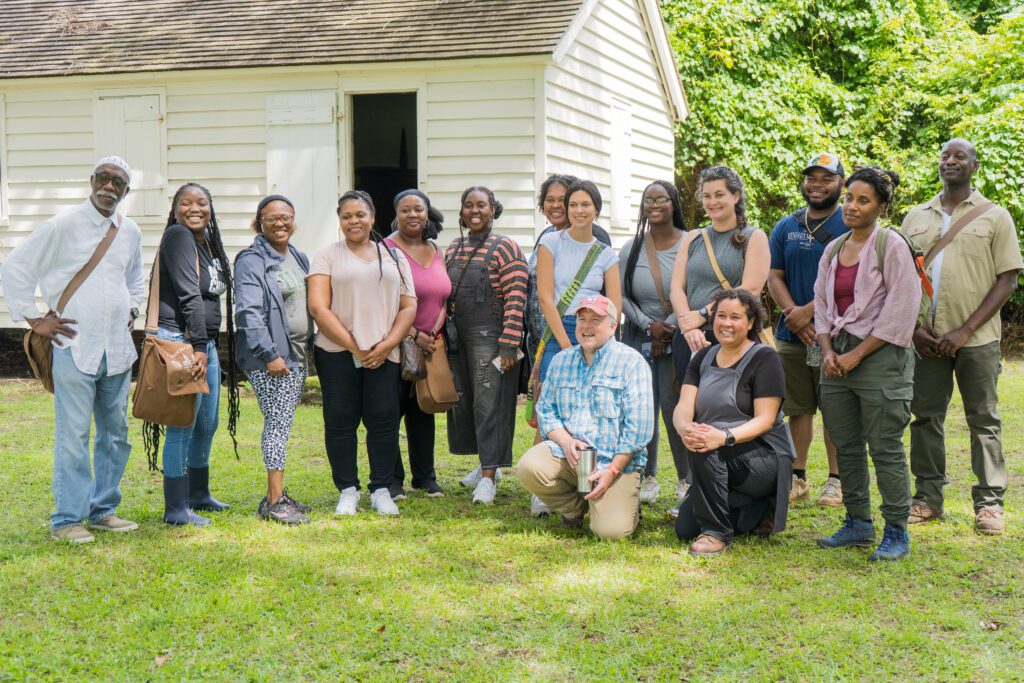
The field school, launched on May 22, focuses on researching and documenting late 19th and early 20th-century buildings and their role within the African American community on Johns Island. The field school is also dedicated to teaching preservation and documentation skills to its class of ten “students”. Ranging in age from 18 to 69, the program’s students, each with ties to the Gullah Geechee Cultural Heritage Corridor, come from across the United States to learn how to help their communities document their past and help carry their history forward. According to Jon Marcoux, the director of graduate programs in the historic preservation program, the three-week program will teach participants the fundamentals of historic preservation so that they can help preserve the heritage of their home communities while demonstrating the possibilities available with a career in historic preservation and heritage management.
“We want to document these incredibly important historic structures and their roles in the history of the Johns Island community, whose historic African American cultural landscape is being erased by aggressive development,” shared Marcoux.
McLeod Plantation Historic Site
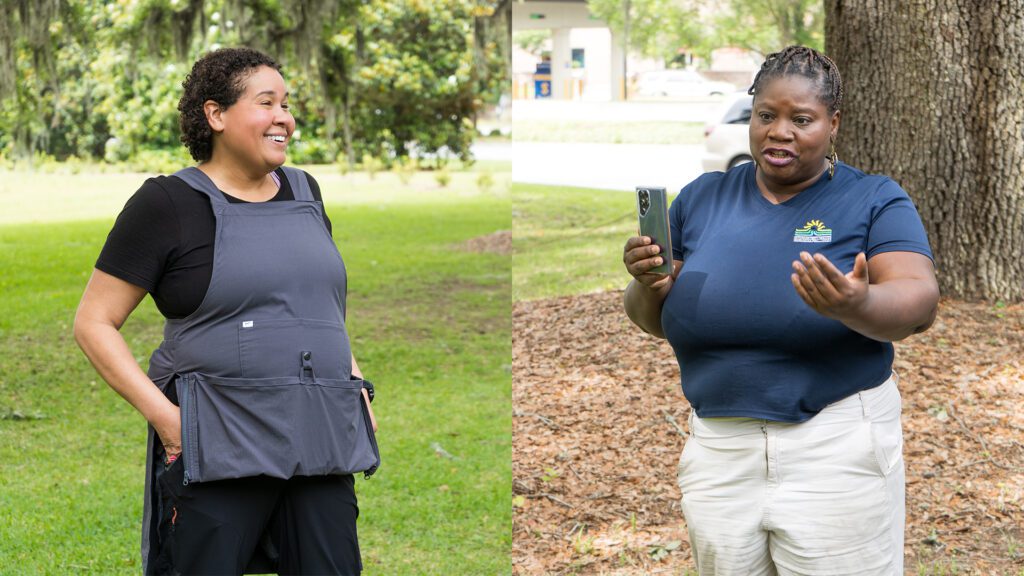
On May 31, 2023, the cohort visited the McLeod Plantation Historic Site on Johns Island, where students spoke with and learned from Toby Smith, the cultural history interpretation coordinator for Charleston County Parks, and Jobie Hill. Hill is a preservation architect and the founder of Saving Slave Houses, a project committed to the preservation and education of the history of enslaved people through documenting slave houses in the Slave House Database. The database is an interdisciplinary national study of slave houses in the United States, interpretation, education, community outreach and genealogy. Together Smith, Hill and the students discussed how architecture played a role in the lives of the enslaved people and how the layout of the plantation affected power dynamics, including the amount of autonomy enslaved people had over their bodies and families.
“I am doing this for my home in Clarendon County and the community of Atlantic Beach,” said Patricia Mallett, a student in the field school cohort. “I want to be able to preserve a lot of the buildings and churches that are not on the National Register of Historic Places for both Clarendon County and Atlantic Beach, especially since both places were integral to integration and Civil Rights.”
Moving Star Hall
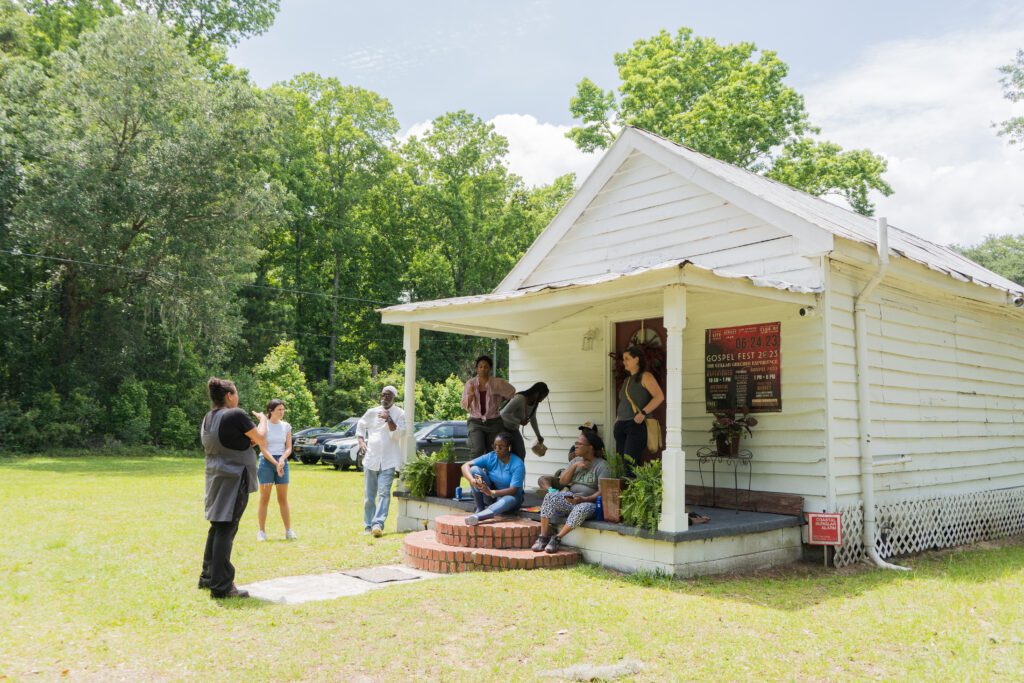
Following the visit to McLeod Plantation Historic Site, the cohort visited Moving Star Hall, a historic Praise House which also served as a community building on Johns Island. It is the only remaining praise house on the South Carolina Sea Islands, according to the National Register of Historic Places. The building was the meeting place of the Moving Star Young Association, a religious, social, fraternal and charitable community institution, and the home of the Moving Star Hall Singers, a multi-generational family group nationally recognized for their contributions to African American musical heritage.
At this site, students and Hill investigated the building and discussed changes that have been made to it since it was constructed, sometime between 1910 and 1920. Students also learned how the Civil Rights era and Jim Crow laws were possibly significant reasons behind many of the architectural changes to the site and how these changes assisted in keeping the Moving Star Hall community safe and able to meet during a period in history where it was not safe for African American people to gather together.
The Progressive Club
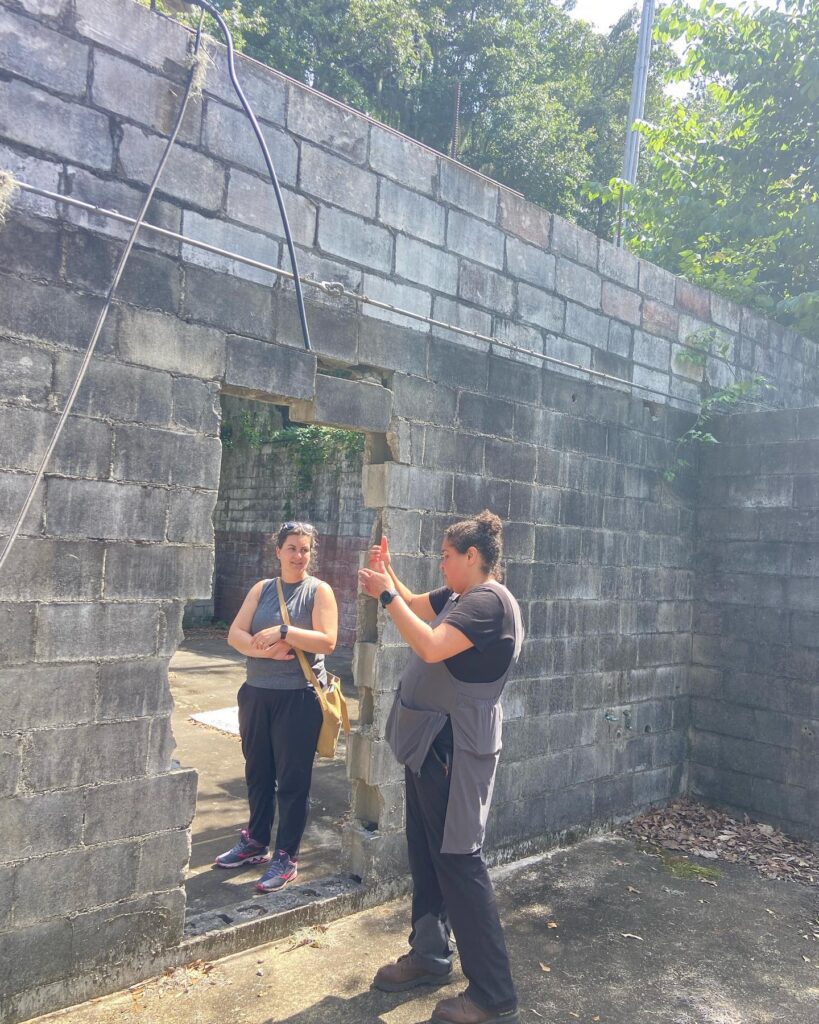
The field school finished their site tour and workshop with Hill by visiting The Progressive Club, a center of civil rights activism in the Lowcountry, founded in 1948 by Esau Jenkins and Joe Williams. Students discussed how the construction and layout of the building, very different than Moving Star Hall, functioned and showed signs of designed details (brick sills in the otherwise CMU/cinderblock walls for the parts of the building that were lodging rooms to make the institutional architecture more humane and residential), incidental details (like the bars protecting the window glass from the inside, which is hypothesized to tell the story of when the space was used as a basketball court), and small, sometimes ephemeral, details of personalization (like the fading sign, painted in yellow and green, that names the building “the Progressive Club”).
They also discussed how the club helped the community through adult education, social history, politics, ethnic heritage, recreation and commerce programs. According to the Preservation Society of Charleston, the club was founded to empower the island’s African American community against racial injustice through education and social action. The Progressive Club consisted of dormitory lodging, a community recreational facility, a childcare center, a meeting place and a grocery store. The building lost its roof in Hurricane Hugo in 1989 and stands as a ruin with an interpretive sign on River Road.
“Architecture is about people. Historic buildings encapsulate untold stories of the people who built, modified, and occupied them,” explained Hill. “The details of these structures provide a glimpse into the lives and events that took place there. African American historic sites represent irreplaceable pieces of history that embody the suffering, strength, resilience, perseverance, and strong bonds of our ancestors.”
“We are blessed that we have this training and opportunity”, explained Mallett. “I’m doing this so the next generation and the present generation can learn about our history, appreciate our history and to do the best we can to make this world a better place for all of us.”
Get in touch and we will connect you with the author or another expert.
Or email us at news@clemson.edu

